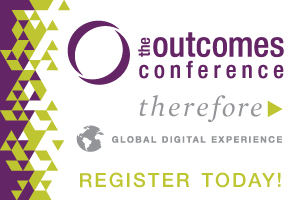
Prevent Employee Burnout By John Staub

3 Steps to Prevent Employee Burnout
Awareness of employee burnout has grown by 689% over the last two decades. Much of this is because of increased study and greater resources. But in our post-pandemic world, we have moved beyond mere awareness of burnout to now actually experiencing it.
Fact About What’s Happened
2020 and beyond certainly presents as traumatic to many people for many different reasons. Clinically, burnout is not attributed to a single moment. Rather, burnout is the result of perpetual buildup. Harvard suggests too much collaboration, poor time-management, and overworking top producers are some of the top contributing factors that pile up over time. All of which await the unsuspected straw to break the camel’s back.
In what feels like an instant, burnout can occur.
Burnout arrives with symptoms that simply cannot be ignored. Forbes explains that the top three signs of burnout are decreased productivity, increased cynicism, and being detached from the mission. The latest data show that we need to be keenly aware of this growing problem:
- 1 in 4 individuals have poor mental health
- 77% of employees have experienced burnout
- 71.6 million changes in jobs occurred this past year
- 38% of Christian ministers have contemplated quitting
As Christian leaders, it is our responsibility to care for the people God has entrusted to us. After all, the healthier we are as a team, the better our mission can be accomplished together! Here are best practices for ensuring you build a strong foundation of rest and wellbeing to prevent employee burnout.
(1) Expect Your Team to Sabbath
“Six days you shall work, but on the seventh day you shall rest. In plowing time and in harvest
you shall rest.” (Exodus 34:21)
Americans rest less today than we have in any other time in modern history. Perhaps it’s our phones, or perhaps it’s our access to see others’ success that pushes us ever further into anxieties of perpetual productivity. We vacation less and we don’t shut down properly each weekend to recover. Little by little, our body, soul, and spirit begin to suffer. Establish a culture of sabbath, and lead it yourself. Our teams will seldom enjoy that which we do not provide an example of ourselves. This could be as simple as making sure to not answer that email on your day off. Or making sure you’re home for dinner. No matter what this means to you in your context, be sure your team sees from you and is expected to practice the gift of rest and sabbath.
(2) Talk About Burnout
“Bear one another’s burdens, and so fulfill the law of Christ.” (Galatians 6:2)
Normalizing the topic of burnout can sometimes be like finally turning on the light. Let conversations about how you’re really doing be something that your team can trust. Having mutually-agreed-upon Key Performance Indicators (KPIs) is a way to keep track of your team’s productivity in an objective and non-threatening way — and it’s easy to tell when something is off very quickly. Offering options like working from home or shifting work hours can ensure proper work-life balance. And the Mayo Clinic suggests that employers encourage healthy eating and active lifestyles by example to promote holistic wellness for the team. These are all wonderful tools to naturally talk about and prevent employee burnout.
(3) Take Your Budget Further
Burnout does cost money. Harvard cites burnout actually costs organizations 11-14% of annual payroll because of decreased productivity. That is a lot of money wasted! However, there is good news! Employers of all sizes have been stabilizing their budgets for many years now by delivering individual health insurance plans to their employees instead of offering outdated group plans. The result is an average savings of $7,950 per employee with better coverage. Yes, this is not only possible but it’s happening across the U.S. And the saved resources are so substantial that employers can start offering virtual counseling services to prevent employee burnout from the get-go, or even more intensive therapy to ensure healing occurs in the best possible way.
####
John Staub serves as Director of Outreach for Remodel Health, a health benefits management software used by Christian churches, ministries, businesses, and schools across the U.S. to provide an innovative solution for better coverage at lower costs. As a national thought leader and expert in the health benefits field, John brings passion and knowledge to the benefits industry.

September 1 – October 31, 2022 – Coming soon – Register today!

What is Christian Leadership Alliance?
Christian Leadership Alliance equips and unites leaders to transform the world for Christ. We are the leaders of Christ-centered organizations who are dedicated to faithful stewardship for greater kingdom impact.
Sign up for FREE blog updates.
Upcoming Events
Check back later!


